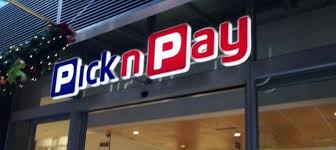
by Tabani Moyo
There was something profound about the launch of the Pick n Pay retail outlet at the Village Walk in Borrowdale’s Sam Levy cosmopolitan shopping complex. It gave birth to a new look retail outlet borne out of the old TM retail shop after investing a whooping $2 million dollar in the surgical transformation of the store. The headline that appeared in the NewsDay supplement of March 30, 2017 aptly captured the epitome of the brand. “Pick n Pay Borrowdale, a shopping paradise,” read the headline.
As I walked into the store, I had painted a picture of what to expect upon entering the outlet, genuinely assessing, my expectations were surpassed by the shopping experience that I enjoyed. The brand Pick n Pay has taken retailing to dizzy heights.

The retailing sector is generally a cutthroat enterprise. The Spar Franchise had a first mover advantage, when the country emerged from the crippling 2008 deep-end crisis. The franchise anticipated the emergence of a multi-currency regime on the horizon and invested in refurbishing its outlets and the total experience that had succumbed to economic meltdown.
It stole the thunder from the traditional brands that had emerged strong in Zimbabwe post independence era such as OK, TM and Bon Marche among others. This was mainly because of the understanding of the evolving tastes of the customers and providing an experience that could not be matched by competition.
But this time around, Pick n Pay has redefined the scope of creating a customer experience through its Borrowadale branch. Upon the launch of the branch, the retail giant’s management announced that they are going to refurbish all the TM branches country-wide inline with its approach of creating the best experience for its customers.

This is going to shape the culture of retail service in the country, which has been rarely experienced of late. When economies are melting, the first causality is the sense of service and the brand values. I therefore genuinely hope that this deliberate approach of investing heavily into customer experience will one day rub into our own local brands so that they can dominate markets in foreign lands like what Pick n Pay is doing in Zimbabwe. Spar has been overtaken irrespective of enjoying all the social capital that came with the first mover advantage. It lost the market share as the brand failed to keep up its grip in the market as a result of failing to understand the brand management evolution.
Presently, we are in the era/age of customer experience. This is an era that is highly powered by technological developments that are aimed at delivering an experience of a lifetime to its customers. Because of these phenomenal technological changes, customers have an incredible voice in brand building and exerting pressure on the quality of experience that the brand should deliver. There is a need for the business to clearly understand the four key dimensions of business if they are to create an experience that surpass competition namely: the behavior of its people, the product, the environment be it brick and mortar or the virtual space or distribution channels and its communications.

When I walked into the new Pick n Pay branch I immediately realized that it managed to create an ecosystem around the customer which gears up a lifetime experience. Creating an experience also requires that the company should:
- Be very good at innovation
- Invest in deep market engagement (rooting the business in the market needs)
- Position the brand experience as a differentiator
It is critical to remember that while we are in the age of customer experience, brand management has come far, through an evolution that defines our history. Before we got into the current phrase, we were in the age of value, which started predominantly around the late 1980s. This is the era in which brands became business assets, which generated value for their owners and appeared in the companies’ balance sheet. In this era, it shifted from being viewed as a marketing function and became a center of business strategy. It was realized that a brand had both short and long-term advantages in that the brand drove choice (the role of the brand), which increased revenue. It also commanded a premium, which stimulated profits (financial performance). Ultimately, it secured customer loyalty (brand strength) that reduced risk and guaranteed sustainable existence (brand value). Brands such as OK and Bon Marche dominated this era.
But before the age of value, we were in the first stage, the age of identity – ‘marking’ brands. This was done to make it easy for the owners to identify their brands from the rest. This was mainly the era around the 70s and 80s, which was aimed at setting the product apart from the competing offerings.
As the process of brand management evolves, it is imperative to keep on asking which phrase are we likely to enter next? It’s highly likely that we are headed for the age of brand personalization, and building an ecosystem around it. We have lost many local brands due to failure to understand the evolving nature of brand management. Do you still remember Zimbabwe’s own Jazen Chain stores? It rose in the era of identity and folded without evolving to the next levels. In the 21st century, markers should appreciate the strategic nature of brand management as an enabler of value proposition and differentiation of the whole business as a strategic driver in unlocking a world-class experience for the customers.
Tabani Moyo is a chartered marketer, brand strategist and communications asset based in Harare. He can be contacted at moyojz@gmail.com or follow is views on his blog The Brand Strategist https://tabanimoyoblog.wordpress.com


Great piece, Tabani. The mention of Jarzin Supermarkets ( J.A.R.Z.I.N went the radio jingle) reminded me of other retail brands which are lying in the cemetery such as Nyore Nore Zimbabwe Furnishers, Radio Limited, Pelhams etc which have all gone under.
LikeLiked by 1 person
Thanks very much for the feedback boss. True that boss, it’s disheartening that strong brands of our nationhood have failed to evolve! Your Nyorenyore, your Bata, your Chigumba Cash and Carry etc. we have a serious challenge to ensure that our local brands are transgenerational in the long run.
LikeLike
Great piece Dhewa, ngazviende mberi. Whilst I miss certain brands that were big during the precolonial period, I also partly blame governments because there are brands that they Shud protect or help stay afloat via deliberate policies. Lion Matches and those mentioned above needed that type of protection in my view.
LikeLike
Thank you very much for the kind feedback SaNyabadza. Very true, government should support the boost of local brands especially through tax incentives and ensuring that they produce competitive products to remain relevant in present day Zimbabwe.
LikeLike